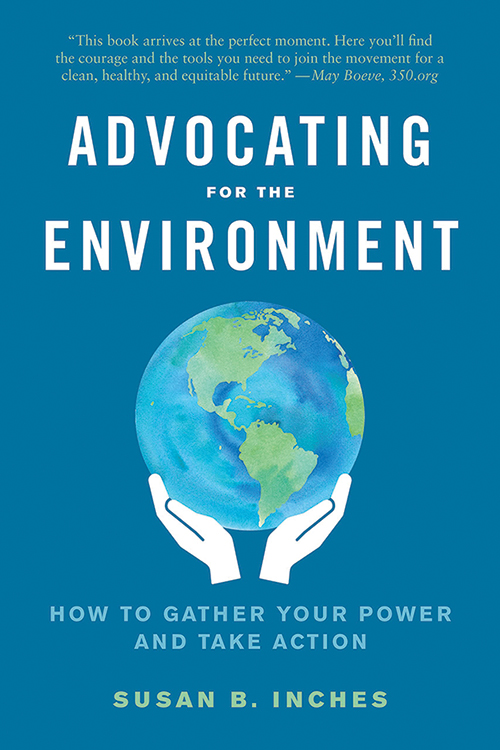
Advocating for the Environment: How to Gather Your Power and Take Action
Reviewed by Tom and Sandy Farley
June 1, 2022
By Susan B. Inches. North Atlantic Books, 2021. 368 pages. $19.95/paperback; $13.99/eBook.
Have you lost hope, or do you find yourself discouraged in your environmental advocacy efforts? Are you looking for ways to interact with decision makers who see the world in different ways? This hopeful book is for you.
Susan Inches presents practical approaches similar to those offered in Persuade, Don’t Preach by Karen Tibbals (reviewed in FJ Nov. 2021) and How We Win by George Lakey (reviewed in FJ Nov. 2018), whom Inches credits for encouraging her to turn her 2018 university course outline into this book.
Advocating for the Environment has the feel of a college course. The first chapter tells you what to expect. Then each of the following well-written chapters fulfills those expectations. Besides her academic background, Inches brings to this book her extensive experience in government work as a former director at the Maine Department of Marine Resources and former deputy director of the Maine State Planning Office.
Part 1 is titled “Learn to Think Differently.” What is your advocacy story? What convinces people is not facts but compelling narratives: “Your power is in the authenticity of your story.” Lived experience speaks to both liberals and conservatives.
Inches references the observations of linguist and philosopher George Lakoff that conservatives often hold to the ideal of the “strict father” directing his obedient children to do what is good for the family and the community. Liberals often idealize the “nurturing parent” encouraging their children to share, display empathy, and make their own decisions. When a monarch or elected leader is a good and wise strict father, this can work, but that is seldom the case. What the world needs are more societies modeled on the nurturing parent, as most Scandinavian countries have become. Still, we may want to speak convincingly to those who value the strong, directing patriarch.
Part 2 is titled “Gather Your Power and Take Action.” Tools for such successful advocacy are offered, often accompanied by examples of their effective use. She notes that much environmental legislation is bipartisan. Some companies, such as L.L.Bean, are already developing policies that benefit the environment and their employees’ welfare, even if following these policies makes the company less competitive.
Inches believes that environmental change for the better is possible. Near the conclusion she lists eight reasons to be optimistic:
- Creative and proactive people are everywhere.
- Young adults embrace diversity and economic equality.
- Advocates can build on existing models.
- We have the tools for change.
- New technologies will move us toward sustainability.
- Conservative support for addressing climate change is growing.
- Creating an economy based on sustaining life is within our reach.
- The current disruptions may be our best opportunity in years.
Her final section, “For Further Reading,” gives sources of in-depth information on many of the topics discussed in the book.
When we do small things, we alter the course of history. When we join with others, our efforts are magnified, which is what Advocating for the Environment encourages. We encourage you to be an advocate and use this book to maximize your effectiveness.
Tom and Sandy Farley are members of Palo Alto (Calif.) Meeting, storytellers, booksellers with EarthLight, and coauthors of the Earthcare for Children curriculum.


